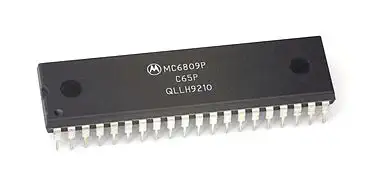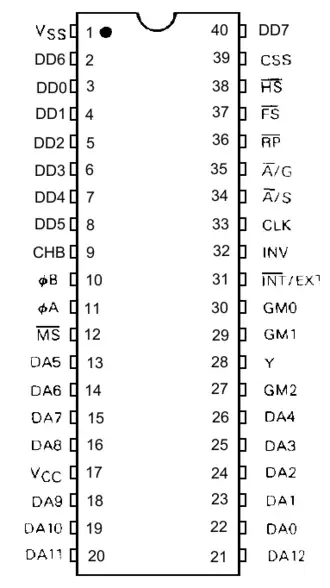TRS80 Color Computer 3
The Tandy Color Computer 3 was the successor of the CoCo 2. The CoCo 3 came with 128KByte of RAM, an analog RGB video port for better video, enhanced 640x192 pixel graphics, a 64-color palette and more. All the ports that were on the previous model of the CoCo were also present on the CoCo 3.
The CoCo 3 came with Disk Extended Color basic 2.1 built in. This was an enhanced version of Microsoft Basic, similar to the BASIC of the CoCo 2, but with extra commands and functions for the higher graphics resolutions of the CoCo 3.
RAM could be expanded to 512KByte, and after market upgrades have achieved up to 8MByte of RAM. The Multi-Pak 4-port bus expander allowed the use of extra controllers for floppy disk and hard disk drives (SCSI, IDE, MFM, RLL), true RS-232 devices and MIDI instruments.
The CoCo 3 was an 8-bit computer which set it apart from Atari and Commodore, both of which were using the 68000 processor at the time. This architecture forced the use of bank switching to access all of the RAM. To improve speed, teh CoCo 3 had an interrupt controller which eliminated a lot of the slow timing loops used in the previous CoCo's.
A prototype of the CoCo IV was made by Tandy, but that never made it to market.
Motorola 6809 CPU
The Motorola 6809 is an 8-bit microprocessor with some 16-bit features. It was designed by Motorola's Terry Ritter and Joel Boney and introduced in 1978. Although source compatible with the earlier Motorola 6800, the 6809 offered significant improvements over it and 8-bit contemporaries like the MOS Technology 6502, including a hardware multiplication instruction, 16-bit arithmetic, system and user stack registers allowing re-entrant code, improved interrupts, position-independent code and an orthogonal instruction set architecture with a comprehensive set of addressing modes.


Motorola MC6847 Video Display Generator
The MC6847 is a video display generator (VDG) first introduced by Motorola and used in the following machines (this is not a full list):
- TRS-80 Color Computer
- Dragon 32/64
- Laser 200
- TRS-80 MC-10/Matra Alice
- NEC PC-6000 series
- Acorn Atom
- APF Imagination Machine
The VDG is a relatively simple display generator compared to other display chips of the time. It is capable of displaying alphanumeric text, semigraphics and raster graphics contained within a roughly square display matrix 256 pixels wide by 192 lines high.
The ROM includes a 5 x 7 pixel font, compatible with 6-bit ASCII. Effects such as inverse video or colored text (green on dark green; orange on dark orange) are possible.
The MC6847 is capable of displaying nine colors:
- black
- green
- yellow
- blue
- red
- buff (almost-but-not-quite white)
- cyan
- magenta
- and orange

RAM max: 512kB Sound Chip none Sound 6 Bit D/A, or single bit sound. Display Chip Advanced Color Video Chip (ACVC or GIME) Display Max resolution of 640x225
16 colors out of palette of 64 Best Color 16 out of 64 colors Best Graphics 640x400 (512K RAM required) Sprites none System OS Microsoft BASIC Storage External Disk Drives, External Tape Interface.
The MC6847 is a Video Display Generator (VDG) first introduced by Motorola in 1978

